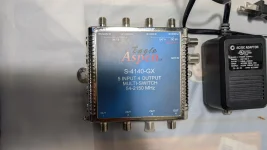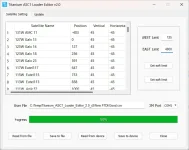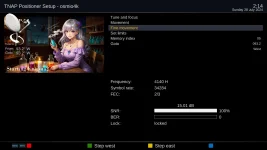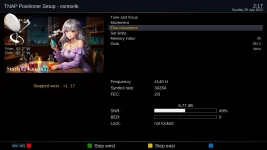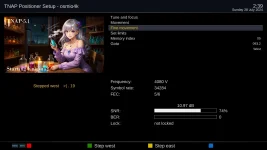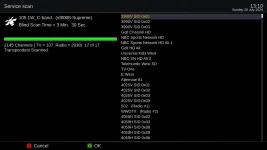el bandido
TNAP-Images
The job of the scalar is to keep the lnb "looking" at the dish. When the lnb "sees" the dish and what is behind the dish, then the satellite signal degrades, and you may possibly have multiple lobes, or places on the dish that are strong for one transponder, but weak for another.
Also if the scalar is set incorrectly, then the lnb can only "see" part of the dish and signal from the satellite degrades.
The scalar ring will be set or pulled out for shallow dishes, and pushed in for dishes shaped like a bowl. According to the pictures, your dish is shallow.
If possible, Motorized Dish adjustments should be made on the south or center satellite. Any adjustment you make effects all of the satellites in the arc, and is the reason for making adjustments at center of the arc.
It might be a good idea to run your system a bit and see how it works. I usually try to see how things perform before adjusting anything and make notes of what I have Before making adjustments..
Also if the scalar is set incorrectly, then the lnb can only "see" part of the dish and signal from the satellite degrades.
The scalar ring will be set or pulled out for shallow dishes, and pushed in for dishes shaped like a bowl. According to the pictures, your dish is shallow.
If possible, Motorized Dish adjustments should be made on the south or center satellite. Any adjustment you make effects all of the satellites in the arc, and is the reason for making adjustments at center of the arc.
It might be a good idea to run your system a bit and see how it works. I usually try to see how things perform before adjusting anything and make notes of what I have Before making adjustments..

